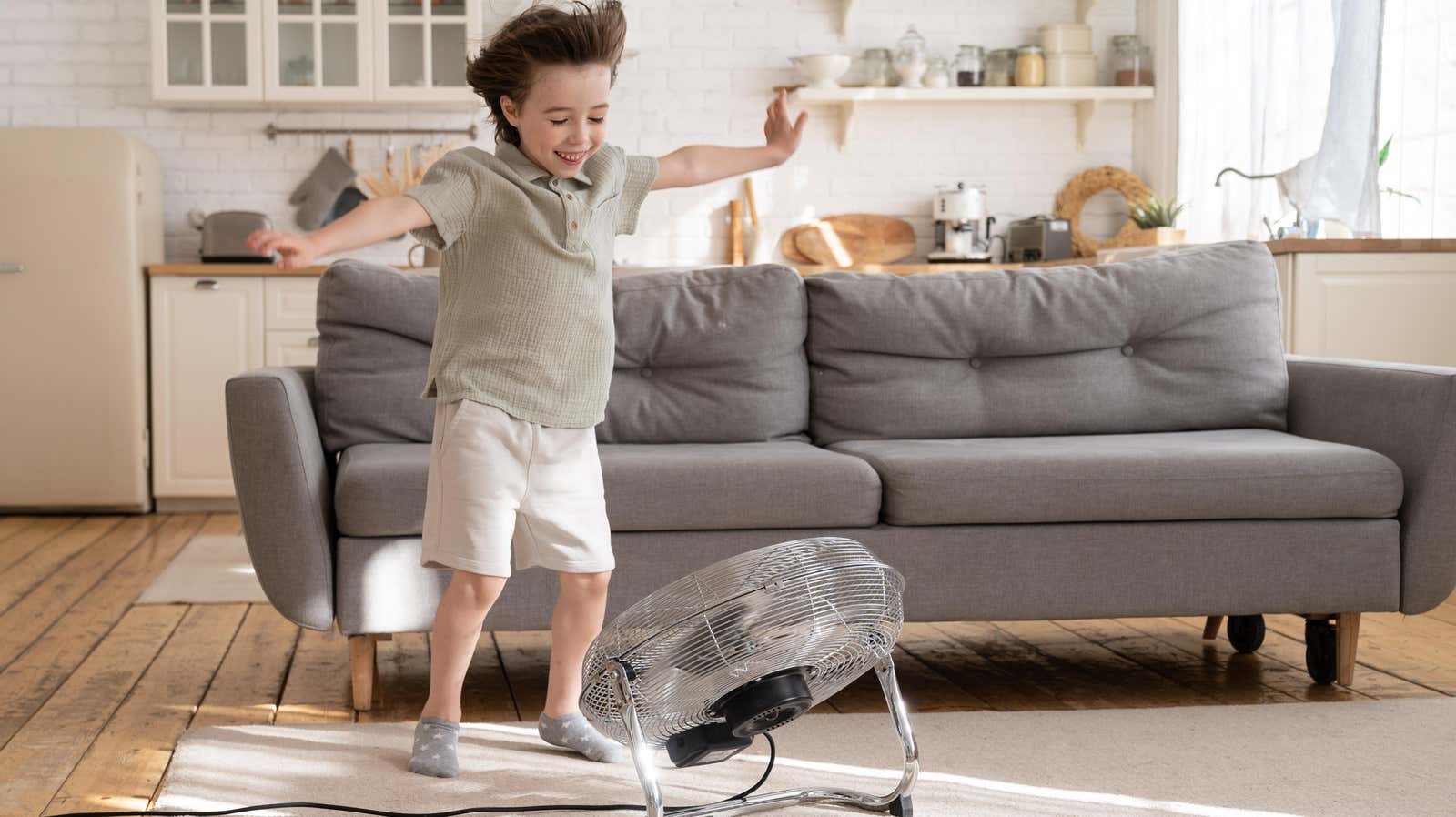Where to Place Fans in Your Home for Maximum Cooling

This is my fifth summer without air conditioning. I’m just posting this right now to reinforce my conscientiousness as an expert at keeping my cool without him. Since this summer has been hot as hell – dangerously hot – and we can expect future summers to be the same, I’m here to tell you about the perks and glory of being a humble fan. I got one of my fans just by stealing it from an ex during a breakup, but these things are relatively cheap, so whether you use them instead of or in addition to AC, you should get it by any means necessary.
Whether your fans are ill-gotten or acquired honestly, they won’t do you as much good in this heat if you don’t use them strategically. This is where you should place them for maximum effectiveness.
Consider the size and shape of your fan
In my small apartment I have two fans: the one in my living room (which unfortunately is also my dining room) is a rotating cylinder about three feet high. When it’s running at full power, I can feel it breeze about eight feet if there’s no obstruction. The fan in my bedroom is a small round one that fits on a bedside table, but its diminutive size is deceiving as I can feel it from about three feet away.
According to fan manufacturer Lasko , certain sizes and styles of fans will perform better in certain spaces. In general, if you want to cool your living room or family room, choose one of these:
- tower fan
- Pedestal Fan
- wall fan
- Bladeless fan
- Air circulation fan
While each will direct the airflow slightly differently, they all do basically the same thing: create a breeze and circulate the air. You want something that fits well with your space and has some power behind it. For smaller spaces like bedrooms, you can use a smaller fan.
Where to place the fan in the room
However, it’s not enough to put a big fan in a big room and a small one in a small one – you also need to find the perfect place to install it. Remember that cold air sinks and hot air rises, so if you have a high ceiling, you provide plenty of room for warm air. Stairs and hallways in these large open spaces will be hotter than the areas below them. My “bedroom,” for example, is actually an attic storage room at the top of my studio, with ceilings that rise 11 feet. Without my little ventilator in the bedroom, I would have already experienced some kind of heat-related medical incident in my sleep. You may need multiple fans to cover higher areas, so keep that in mind.
The key to placement is this: adjust the fan so that it points towards the wall opposite the one where most of the activity in the space takes place. This, according to Lasko, will push the air to the surface. It will be reflected, interacting with the rest of the air and cooling the space as a whole.
Fan location is also more important than fan type. You might think that a taller fan or a fan on an elevated surface is the best choice for cooling a room, as it attacks the hot air above, but as Lasko points out, a fan lower to the ground can actually trap heat. “refreshing chilliness” lingering down there and pushing it out. Consider a box fan that can be placed on the floor or on a window. Window fans are great for circulating fresh air outside, but if you’re worried about allergy triggers getting into your home or just letting outside air in, it’s not necessary.
Finally, when developing your layout plan, think about your furniture. A window fan covered with curtains will do you less good than an open one. Similarly, a floor fan that is blocked by a sofa or table won’t be as useful as a fan that has a free path to push air out. One thing that might be in front of the fan is a skillet with ice to produce some cold air that your fan can pick up and push out ( a sort of DIY air conditioner ).
If you only have one fan, or if you want to use one fan to circulate air in multiple rooms, your placement strategy will be slightly different. Andrew Pursily, an indoor air quality engineer at the National Institute of Standards and Technology, told our friends at Quartz that if you have air conditioning in one room and you want to blow that cold air into another, put a fan in between and make sure the air blows into the warmer one. This strategy may work less if you have a large fan in one room and want to use a smaller fan to blow the colder air it generates into a smaller one next door.
Develop a usage strategy
The US Department of Energy claims that fans do not cool rooms , but the people inside those rooms. I disagree with this because I notice a noticeable difference between entering a room where my fan was on and entering a room where it wasn’t, but that doesn’t matter. When considering placement, according to the National Renewable Energy Laboratory , it’s important to make sure your fan actually blows on the people in the room, so whether it “cools” the room or not, people feel the benefit.
However, you must place the fan in a convenient location for you to turn it off. Leaving the fan on can generate some heat from the power supply, and while this is negligible compared to the heat of a hot summer day, it is also a waste of energy.